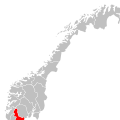Arendal
| Arendal kommune | |||
|---|---|---|---|
| — Municipality — | |||
|
|
|||
|
|||
 |
|||
| Coordinates: | |||
| Country | Norway | ||
| County | Aust-Agder | ||
| District | Sørlandet | ||
| Administrative centre | Arendal | ||
| Government | |||
| - Mayor (2003) | Torill Rolstad Larsen (Ap) | ||
| Area | |||
| - Total | 270.00 km2 (104.2 sq mi) | ||
| - Land | 256.05 km2 (98.9 sq mi) | ||
| - Water | 13.95 km2 (5.4 sq mi) | ||
| Area rank | 289 in Norway | ||
| Population (2010) | |||
| - Total | 41,655 | ||
| - Rank | 19 in Norway | ||
| - Density | 163.7/km2 (424/sq mi) | ||
| - Change (10 years) | 5.6 % | ||
| Demonym | Arendalitt[1] | ||
| Time zone | CET (UTC+1) | ||
| - Summer (DST) | CEST (UTC+2) | ||
| ISO 3166 code | NO-0906 | ||
| Official language form | Bokmål | ||
| Website | arendal.kommune.no | ||
|
|
|||
Arendal is a town and municipality in the county of Aust-Agder, Norway. Arendal belongs to the traditional region of Sørlandet.
The town of Arendal is the administrative center the municipality and also of Aust-Agder county. Other villages in the municipality include Rykene, Eydehavn, Strengereid, Kongshamn, Kilsund, and Hisøy.
The offices of UNEP/GRID-Arendal are located in the town of Arendal.
Contents |
General information
Origin of the name
The Old Norse form of the name was probably Arnardalr. The first element is the genitive case of örn, 'eagle' and the last element is dalr, meaning 'valley' or 'dale'.
Coat-of-arms
The coat-of-arms were granted on 7 November 1924 (based upon an older seal). The arms show a sailing ship as a symbol for the importance of fisheries and sailing to the local economy. A ship appeared on the oldest known seal of the town, dating back to the 17th century. In the late 19th and early 20th century the arms showed the ship in the upper part and a landscape with the Coat of arms of Norway in the base of the shield.[2][3]
History
Arendal was established in the middle of the 1500s, and was then called Arendall. At that time it had no formal town status.
When Kristiansand was founded by King Christian IV in 1641, he granted the citizens a monopoly on all trade in Aust-Agder and Vest-Agder. This grant, intended to subsidize Kristiansand and its fortifications, placed existing towns in a difficult position. Both towns and the peasants in the up country protested the hardships this caused. As a result, Arendal received royal permission in 1622 to continue as a loading-place for timber until a means could be found to transfer its trade to Kristiansand.
The town was given market city privileges in 1723. However the peasants in the surrounding district, who by law were to sell their goods only at Arendal, were smuggling their goods out on cutters and selling them in Denmark, in the Baltic, and in Britain.
This continued until 1735, when Arendal was granted a full town charter. This charter, combined with Danish imposition of a monopoly on grain imports, caused great poverty and starvation among the peasants in the surrounding districts, leading to several famous rebellions.
As a result of the rebellions, the age of privileges for towns like Kristiansand and Arendal came to an apparent end in 1768 by royal proclamation. But the problems did not end then; a farmer, Kristian Jensson Lofthus, in Vestre Moland led a rebellion in 1786 which resulted in the government actually remedying some of the most repressive trade policies, but Lofthus died in prison. The charges against Lofthus were that he dealt in grain and other commodities to the detriment to Arendal’s privileges.
Shipping, shipbuilding, and timber trade as well as mining and ironworks were important branches of industry in Aust-Agder county for many centuries, especially in the Arendal region. Frequent contacts with the world abroad put their mark on our culture and traditions. In 1880, it was the land's biggest port in terms of tonnage handled. At the end of the 19th century, Arendal was recognized as a major shipping centre with many wealthy shipowners. In 1939, it had the 4th largest Norwegian tanker fleet; only Oslo, Bergen, and Stavanger were larger.
Today the town has small boat manufacturing, mechanical industry, electronics industry as well as one of the world's largest silicon carbide refining plants.
Formannskapsdistrikt
The town of Arendal was established as a municipality on 1 January 1838 (see formannskapsdistrikt). On 1 January 1875, a small area with 22 inhabitants was transferred from the municipality of Arendal to the neighboring municipality of Austre Moland and another small area with 52 residents was transferred to the neighboring municipality of Øyestad.[4]
On 1 January 1902, the rural municipality of Barbu (population: 6,787) was merged into the municipality of Arendal. In 1944, a small area of Moland with a population of 21 inhabitants was transferred to Arendal. On 1 January 1992, the neighboring rural municipalities of Hisøy (pop: 4,026), Moland (pop: 8,148), Tromøy (pop: 4,711), and Øyestad (pop: 8,679) were merged into the municipality of Arendal which had a population of 12,478, bringing the total population of the new municipality of Arendal to 38,042.[4]
Townscape
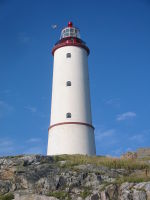
In the middle of the town centre is an area with wooden houses dating back to the 1600s. This area is called Tyholmen, and is what is left of buildings from before the 19th century. The inner harbour of Arendal is Pollen, where the fish market, pubs, and restaurants are located.
"Store Torungen" lighthouse
The lighthouse Store Torungen is located on an island outside Arendal. It was constructed in 1844 and electrified in 1914. It is 34.3 metres (113 ft) high and contains a 2nd order lens. It is reachable by a 55 minute boat trip from the town centre. The lighthouse is still in use.
"Lille Torungen" lighthouse
The lighthouse Lille Torungen is situated on a small island outside Arendal. The lighthouse is 28.9 metres (95 ft) high. Lille Torungen and Store Torungen were constructed as twin lighthouses, and both are located in the Arendal shipping lane.
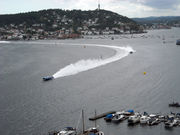
Culture

The institution "Canal Street - Arendal Jazz and Blues" was established in 2001, but has been arranged since 1996, at that time by the name of Arendal Jazz and Blues Festival. The popularity of the arrangement has been steadily increasing. New in 2007 is Hove Festival located on the Island Tromøy just outside Arendal town. It was the largest festival scene in Norway the debut year, and it has a audience capacity of up to 20,000. Another annual popular music festival is Canal Street, a blues and rock festival first presented in 1996.
Geography
The municipality is bordered to the southwest by Grimstad, to the northwest by Froland, and to the northeast by Tvedestrand.
Arendal is the type locality of the mineral Babingtonite, which was first described from specimens discovered here in 1824.[5]
Merdø
The island of Merdø, an island far from the coast facing the Skagerrak, was a major export port in the 17th and 18th centuries and now has a museum, a kiosk, and several beaches. There is regular boat service from Arendal to the island every day during the summer season.
Transportation
Apart from being a port town, Arendal lies immediately southeast of European route E18. The Arendalsbanen railway line runs to Nelaug where it connects with Sørlandsbanen.
Notable residents
- Sam Eyde (1866–1940), Industrialist
- Øystein Grødum (1977), Speedskater
- Finn Iunker (1969), Playwright
- Karl Ove Knausgård (1968), Writer
- Bård Torstensen (1961), Guitarist for heavy metal/rap band Clawfinger
International relations
Twin towns — sister cities
The following cities are twinned with Arendal:[6]
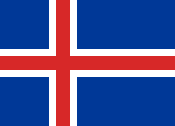 Árborg, Iceland
Árborg, Iceland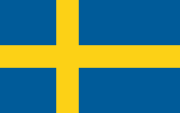 Kalmar, Kalmar County, Sweden
Kalmar, Kalmar County, Sweden Mwanza, Mwanza Region, Tanzania
Mwanza, Mwanza Region, Tanzania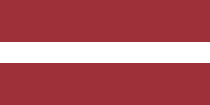 Rēzekne, Latvia
Rēzekne, Latvia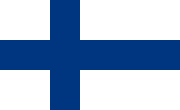 Savonlinna, Eastern Finland, Finland
Savonlinna, Eastern Finland, Finland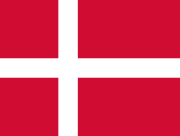 Silkeborg, Region Midtjylland, Denmark
Silkeborg, Region Midtjylland, Denmark
References
Notes
- ↑ "Personnemningar til stadnamn i Noreg" (in Norwegian). Språkrådet. http://www.sprakrad.no/Sprakhjelp/Rettskriving_Ordboeker/Innbyggjarnamn.
- ↑ Norske Kommunevåpen (1990). "Nye kommunevåbener i Norden". http://www.ngw.nl/int/nor/a/arendal.htm. Retrieved 2008-10-03.
- ↑ "Byvåpenet" (in Norwegian). Arendal kommune. http://www.arendal.kommune.no/austagder/arendal/arendalk.nsf/id/9F1205F04DA0695DC12571F50047027A?OpenDocument. Retrieved 2009-01-19.
- ↑ 4.0 4.1 Jukvam, Dag (1999). "Historisk oversikt over endringer i kommune- og fylkesinndelingen" (in Norwegian). Statistisk sentralbyrå. http://www.ssb.no/emner/00/90/rapp_9913/rapp_9913.pdf.
- ↑ "Babingtonite". Mindat.org. http://www.mindat.org/min-478.html.
- ↑ "Vennskapsbyer" (in Norwegian). Arendal kommune. http://www.arendal.kommune.no/austagder/arendal/arendalk.nsf/id/33D5EFB08753A3D7C12571E70040BAE8?OpenDocument&cat=m1_3. Retrieved 2009-01-18.
External links
|
|
|
|
|||||||
|
||||||||||||||||||||||||||||||||||||||||||||||||||||||||||||||||||||||||||||||||||||||||||

